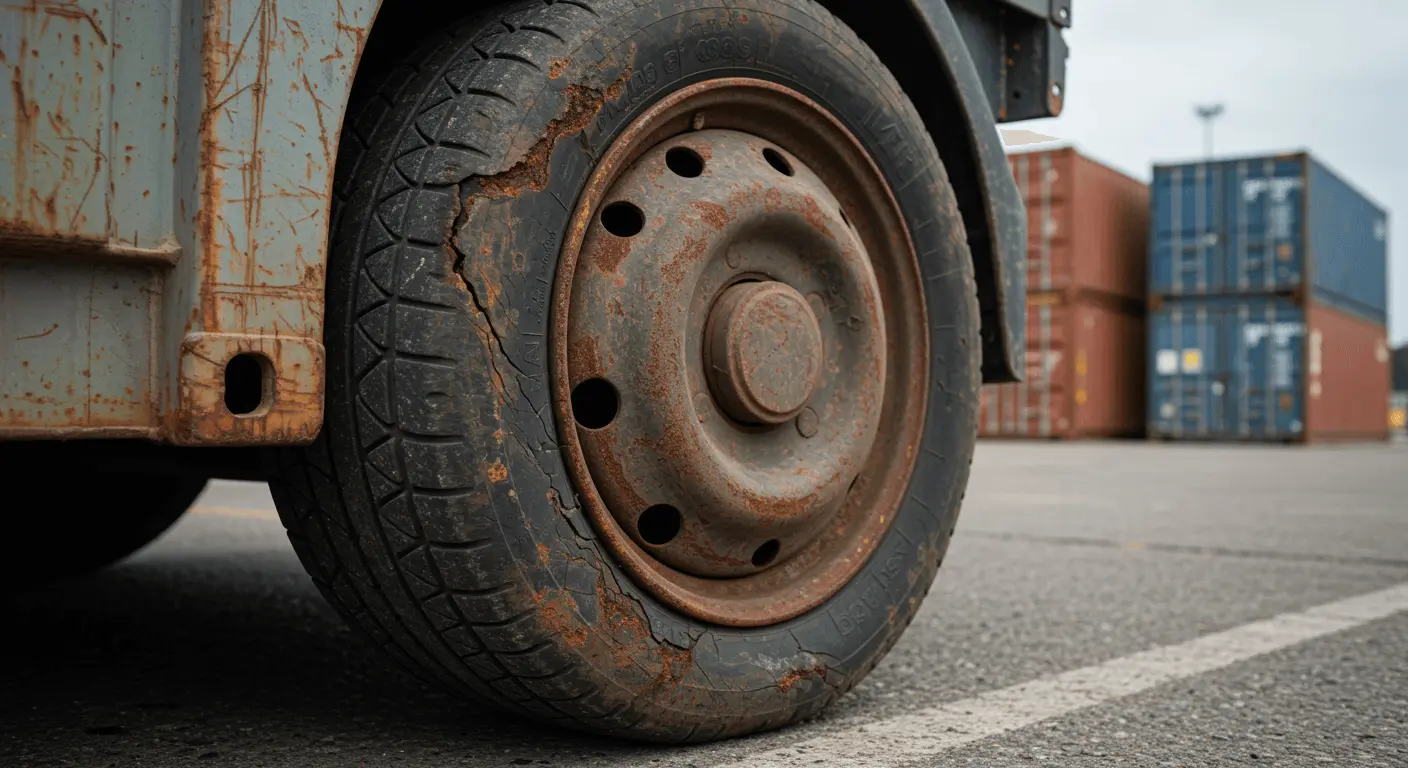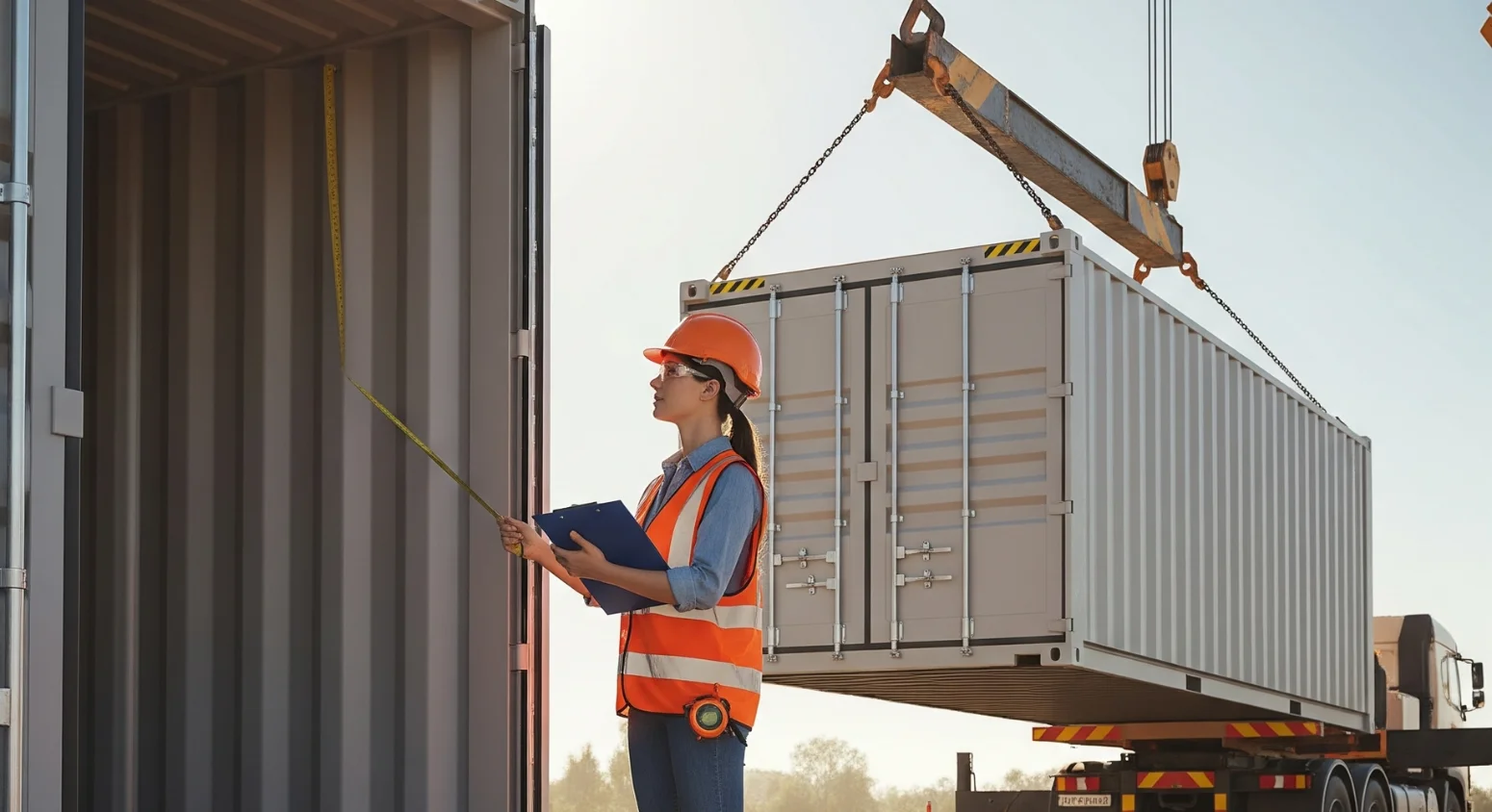Shipping containers are the lifeblood of global logistics, but when the wheels that keep them rolling start to go bad, disaster can strike. Trouble maneuvering containers or strange vibrations may be signs that your shipping container wheels need attention.
The first aspect to maintain for your wheels is to prevent downtime and the potential risks involved, which might end up being very expensive. Here are five essential signs that your wheels need a replacement, so that your operations do not grind to a halt.
Uneven Wear and Tear
Have you recently taken a close, long look at your shipping container wheels? Uneven tread is not just unsightly. It’s your first warning that the wheels may no longer be used. Neglecting this issue often leads to lowered stability, where it becomes tiring to lug around your containers.
These are things to look for:
- Irregular Tread Patterns: Are some parts worn down while others remain untouched? This unevenness can disrupt the balance and movement of the container.
- Flat Spots: They are usually caused by extended periods of sitting under heavy loads, resulting in poor and draggy movement.
- Fading Grip: As traction wears off, your wheels can no longer function properly on smooth or sloping surfaces.
So, what is the cause?
- Too much time spent on uneven surfaces.
- Overloading beyond the wheel’s weight capacity.
- Natural wear due to overuse.
Worn wheels on tools like a shipping container dolly ensure that you will have better maneuverability, less strain, and a longer lifespan for your equipment. Don’t let something as small as uneven wear derail your operations—keeping an eye on this early sign can save you significant time and money down the line.
Lack of maneuverability
Are you exerting more effort than usual just to get your shipping containers moving? Well, lack of maneuverability is one of the most obvious signs that it’s already time to replace your shipping container wheels. Lack of maneuverability may slow down operations, increase labor effort, and even result in potential safety hazards.
Here’s how to identify the problem:
- Higher Drag: Does your container roll harder than you want it to, even on level ground? Worn-out wheels create too much friction.
- Turning a chore: Poor condition of the wheels makes turning or shifting your containers around a nuisance.
- Bumpy Ride: Does your container jolt or jerk around when you are moving it? Perhaps it’s a result of worn-out or out-of-line wheels.
Why does this happen?
- Wheels out of round or developed flat spots.
- Debris that has collected on the tires causing drag.
- Overload in excess of the design specifications of the tires.
Smooth mobility isn’t only a matter of convenience; it’s also about protection of your equipment and people. Upgrade your shipping container dolly with some high-quality wheels, and it will all come together.
Pro tip: Regular inspections and timely replacements are essential to maintaining streamlined operations and stress-free operations. After all, there’s no reason why transferring a container should feel like moving a mountain!
Visible Damage or Deformation
Do you take a close look at your shipping container wheels? Sometimes, the most apparent signs of wear are right in front of you. Cracks, chips, or deformations are not cosmetic problems but rather warning signs that could lead to larger issues if overlooked. What do you look for?
- Cracks and Chips: These can weaken the wheel’s structure and increase the chance of failure under load.
- Bulging or Flattening: This deformation in shipping container moving wheels is often a result of overuse or excess weight.
- Rust or Corrosion: On metal parts, it can undermine the durability and smooth movement.
Why does visible damage matter?
The broken wheels don’t only deter performance but are also dangerous during heavy tasks. Just think about trying to shift a loaded container with a cracked wheel on it-it’s a recipe for disaster.
How can you do that?
- Check the wheels frequently for visible damage.
- Replace broken wheels quickly so that other parts of your equipment aren’t overused.
- Upgrade to durable, high-performance options designed specifically for shipping container dollies or tow bars.
Anticipating visible damage to the wheels ensures less costly downtime; makes operations run smoother; and keeps your team safe. Remember: a small crack today can lead to a big problem tomorrow. Don’t wait until it’s too late!
Excessive Noise or Vibration
Have you ever noticed strange noise or vibration when moving your shipping containers? If so, your shipping container wheels might be giving you a loud—and worrying—signal that they are due for replacement. Excessive noise and vibration are often the first signs that something is wrong, and should not be ignored.
Here’s what to listen and feel for:
- Scraping or Grinding Noises: These sounds may be a sign that the wheels are badly worn or damaged.
- Unusual Vibrations: If your equipment shakes or rattles when it moves, then the wheels have probably lost their smooth surface.
- Persistent Squeaking or Whining: While some noise is normal, persistent squeaking can be a sign that the bearings are worn out or debris is trapped in the wheels.
What are the causes for this?
- Flat Spots or Uneven Wear: These create irregular contact with the ground, and the vehicle would experience bumpy motion and noise.
- Wheel Damage or Misalignment: When a wheel is cracked or deformed, it can’t rotate smoothly and will create vibrations.
- Lack of Lubrication: It may create friction in the moving parts of the wheel, thus causing squeaking or grinding.
So, why is this a big deal?
Ignoring noise and vibration can affect more than just comfort. It can cause further damage to your shipping container dolly, reduce efficiency, and create safety hazards. Plus, the longer you wait, the more costly the repairs might become.
The solution is as simple as changing your wheels before the situation worsens. Upgrading to more resilient, smooth-rolling wheels makes the movement of your containers less noisy and hence more stable, reducing wear while maintaining the containers from growing into more serious problems later down the line.
When keeping equipment in good shape, improvements in productivity will be achieved along with safety for everyone involved.
Regular Maintenance or Repairs
Do you seem to be forever repairing your shipping container wheels? Well, then, that’s probably the indicator that they’re done. Now, regular maintenance does cost your money and also keeps you from engaging in other matters of importance. So, at what point do you decide it’s time to retire and replace, rather than fixing?
Some indicators include:
High Repair Costs: If you need to pay frequently for repairs, the cost of replacement may prove to be the cheaper option in the long term. There is also constant realignment and replacement of certain parts of your wheels, showing that they’re no longer effective.
Declining Performance Despite Fixes: If the wheels still don’t work well after repairs, it’s time to consider an upgrade to more durable options.
Why replace rather than repair?
- Time Efficiency: Constant repairs mean more downtime for your equipment. Replacing the wheels allows you to focus on running your operations smoothly.
- Long-Term Savings: Although repair work might be less expensive at first, using high-quality shipping container moving wheels can avoid many costly repairs down the road and increase the life of your equipment.
- Performance: New wheels allow for improved mobility and efficiency, which minimizes stress on other parts of your shipping container dolly or tow hitch.
Regular replacement of your wheels saves you from those dreaded breakdowns and keeps your operations running without interruptions. With the best quality wheels that suit your needs, you will have smooth and reliable container movements, saving you time and money.
Product Recommendations
To maintain productivity and safety in your operations, it’s essential to use high-quality equipment for shipping container mobility. Below are some standout TriWich products that combine durability, performance, and reliability:
Tri-UP
This heavy-duty dolly is the perfect transport of shipping containers without any hassle. With quality wheels, the Tri-UP allows smooth mobility on any surface, even under heavy loads. Be it across a yard or onto trucks, the Tri-UP’s design guarantees a safe and reliable experience.
Key Benefits:
- Smooth mobility on various surfaces.
- Durable design for heavy-duty use.
- Ideal for both yard and truck loading.
HitchWich
HitchWich is meant to move shipping containers with no hustle by using forklifts, trucks, or tractors. It’s robustly designed and reliable with its wheel setup, proving very good for professionals who need an alternative to getting a tool to transport shipping containers that will last long enough and be multifunctional at the same time.
With these products, you will be less likely to experience maintenance problems, longer lasting equipment, and overall smoother operations. If you are ready to upgrade your container mobility, here are some of the best solutions for you.
Key Benefits:
- Multi-use design for forklifts, trucks, and tractors.
- Robust construction for long-lasting performance.
- Excellent for both short- and long-distance container movement.
Conclusion
You want the shipping container to maintain its good condition of its wheels so you can move them easily. If you hear any noise or encounter difficulty in moving and you could see some obvious damage, that is the time for replacement.
Replacing worn-out wheels prevents you from going down the lane of expensive downtime and promotes safety in addition to high efficiency. Always ensure your shipping container dolly and other equipment are regularly serviced so you never lose any working time.
Don’t wait for things to worsen- act now to get things rolling smooth.
Frequently Asked Questions (FAQs)
1. When should I replace my shipping container wheels?
Look for symptoms like uneven wear, difficulty maneuvering, visual damage, noise or vibration of an unusual type, and a need for maintenance more often. If you feel any of the above symptoms, you should replace the shipping container’s wheels for best performance and safety.
2. Can I fix my shipping container wheels and then not replace them?
In some instances, a few minor adjustments may be acceptable, but in the event that you have cracking or excessive wear, replacement would most likely be a better course of action. Repeatedly repairing your shipping container wheels could increase downtime as well as more significant costs down the road.
3. What kind of wheels should I use for my shipping containers?
Shipping container wheels, especially dollies or tow hitches, should be of good quality to move easily. Using heavy-duty built wheels will guarantee durability and performance in the long run.
4. How can I avoid damaging my shipping container wheels?
Maintenance, not overloading the containers, and making sure they are moved on even surfaces extend the lifespan of your wheels. Cleanliness and free debris prevent wear and tear.
5. Can a shipping container dolly be used with all types of containers?
Yes, shipping container dollies can be used for most standard containers. However, just ensure that the dolly suits the weight and size of your container so it moves well without straining too much on the container.



